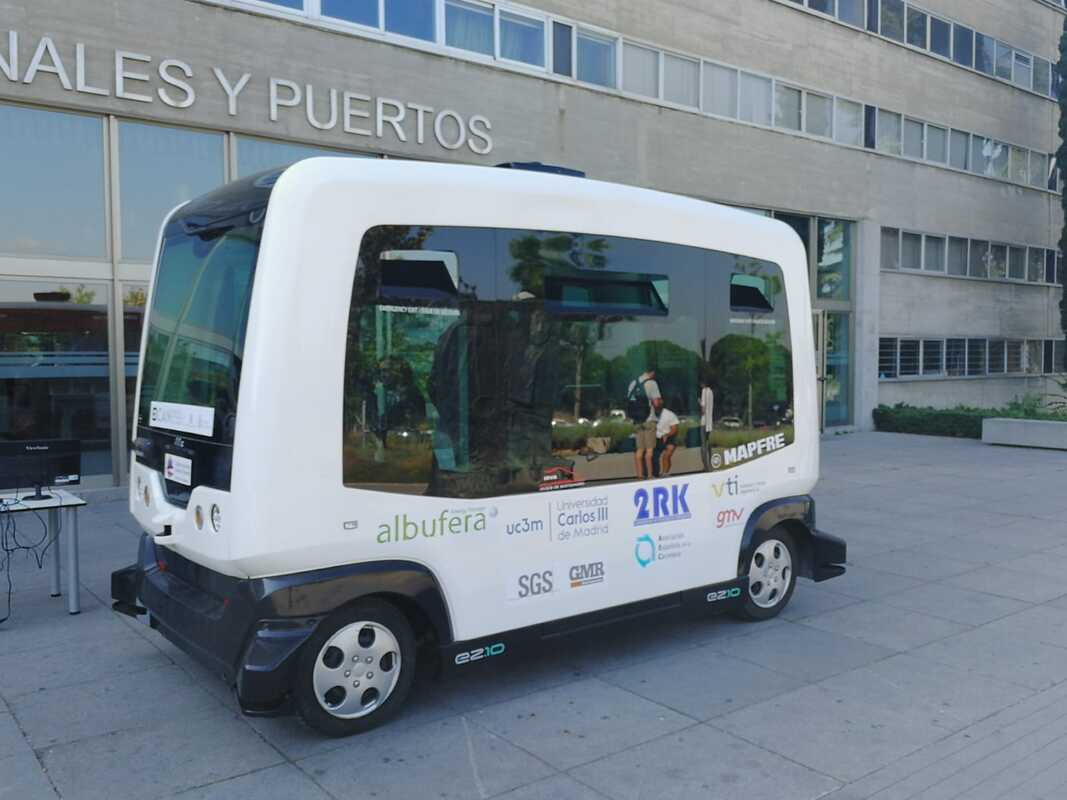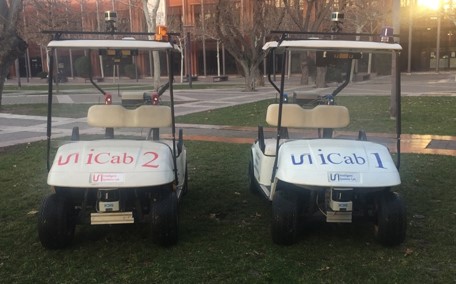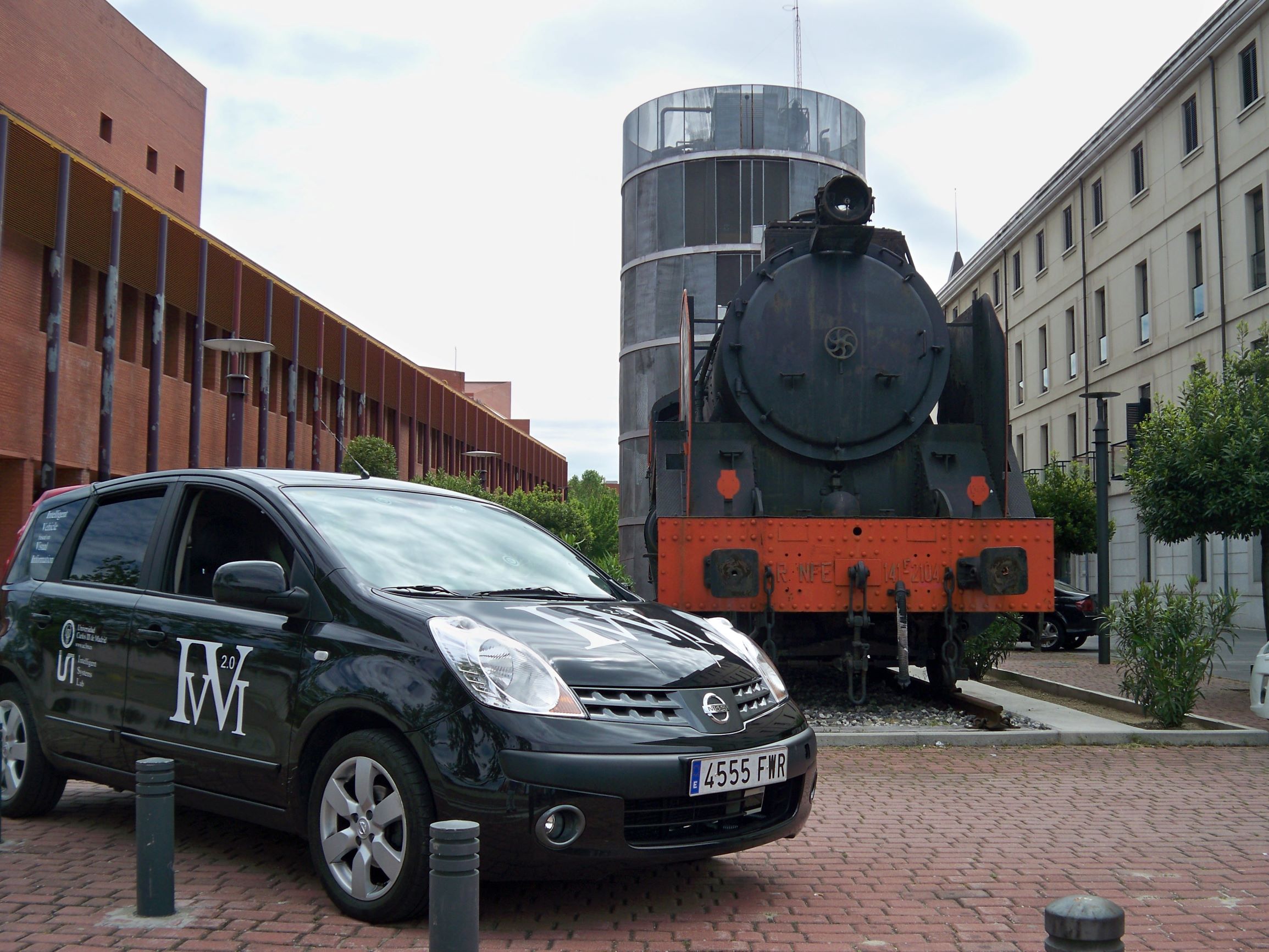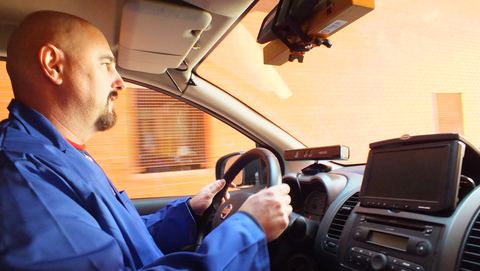Timanfaya Autonomous Bus
LSI is one of the partners of the Cities Timanfaya project. In this project, a prototype of an Autonomous Bus is being developed, to be deployed in the national Park of Timanfaya in Lanzarote, Canary Islands. The project, funded by «Cabildo de Lanzarote» is the first prototype of this type to be designed in Spain.
For more information about the partners and the project, visit the official web site.


iCab
iCab is an acronym for Intelligent Campus Automobile, at which multiple unmanned ground vehicles (electric golf carts) navigate autonomously within the campus vicinity to transport visitors from one spot to another between buildings. Currently there are two golf carts, modified mechanically and electronically in order to achieve the project objective.
These modifications include:
deactivating the throttle paddle and apply direct control of the electric engine for the translational motion
removing the steering wheel and replacing it by electric motor-encoder system for autonomous maneuvers
Each golf cart is equipped with multiple sensors for the environment perception. These sensors enable the vehicle to navigate in dynamic surroundings. Accordingly, the vehicle is able to perform the necessary intelligent maneuvers to reach its destination through a collision-free path. Furthermore, the system is able to detect and classify static obstacles (e.g. trees, lamp poles, buildings, generic obstacles), dynamic obstacles (e.g. vehicles, pedestrians, animals, cyclists, motorists), free navigable space among others. The system bases its navigational decisions on global and local maps, using path planning algorithm.
IVVI 2.0 Platform
IVVI 2.0 (an acronym for Intelligent Vehicle based on Visual Information) vehicle is the second research platform of the Intelligent Systems Lab. It is equipped with the most advanced sensors and processing systems for the development and testing of Advanced Driver Assistance Systems.
While featuring a cutting-edge equipment, IVVI 2.0 has been designed according to the expected future trends in driving assistance systems: all computers, sensors and human-machine interfaces are almost invisibly integrated into the vehicle. The different sensing devices include:
- A stereo-vision system for road, object (vehicles, pedestrians, etc.) and traffic sign detection and classification in day driving conditions.
- A far-infrared-range (FIR) camera, mounted on the rear-view mirror, for pedestrian detection in night driving conditions.
- A multi-layer laser mounted on the front bumper for object detection.
- A motion sensing input device, placed on the dashboard, for face detection and driver monitoring.
- A CAN bus communication device, based on a low-cost embedded system, for driver behavior analysis.
- A GNSS receiver and an Inertial Measurement Unit (IMU), integrated in a platform on the roof of the IVVI vehicle, for providing information about the vehicle ego position and motion.
Additionally, two new side-looking cameras are expected to be added, in order to detect vehicles (and/or other traffic participants) at roundabouts and junctions. Data from sensors are processed on a computing platform placed in the car boot, which is able to work in real time. Software architecture is based on ROS (Robot Operating System) framework, enabling both low-level and high-level information fusion.

